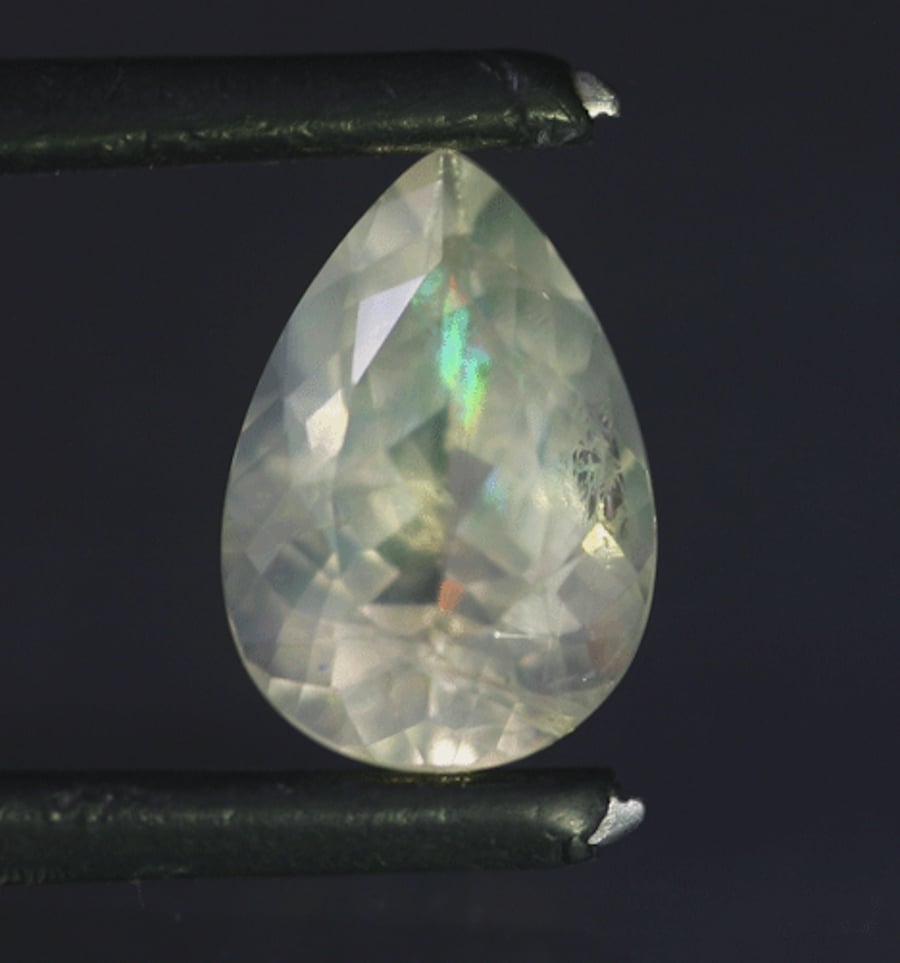Leucite Value, Price, and Jewelry Information
Although abundant in various lava rocks, leucite is extremely rare in gem-quality form and often has a milky or cloudy look. Faceted stones as well as well-shaped crystals are prized by collectors.
2 Minute Read
Although abundant in various lava rocks, leucite is extremely rare in gem-quality form and often has a milky or cloudy look. Faceted stones as well as well-shaped crystals are prized by collectors.
Start an IGS Membership today
for full access to our price guide (updated monthly).Leucite Value
Does Leucite Make a Good Jewelry Stone?
You're more likely to find faceted leucites in mineral collections than jewelry collections. Although some stones may have unusual color flashes, their general appearance doesn't typically lend itself to jewelry wear. They also only have a hardness of 5.5 to 6, which makes them susceptible to scratching from household dust. On the other hand, they have poor cleavage, which actually makes them resistant to splitting. Nevertheless, protective settings are recommended, especially for ring use.
Is Leucite a Type of Garnet?
Because of their sometimes white, milky appearance and outwardly isometric shapes, leucites have been called "white garnets." However, leucite and garnet are distinct gem species with very different refractive indices (RI), specific gravity (SG), and hardness.
Although colorless grossular garnet is called "leuco garnet," that only means this stone shares an etymology with leucite. Leukos is the Greek word for "white."
Identifying Characteristics
Leucite crystallizes into an isometric structure at very high temperatures (~900° C). However, as it cools, it recrystallizes into a tetragonal structure while retaining an outwardly isometric shape. Since tetragonal crystals have axes of two different lengths, some leucites have a very weak birefringence. (In contrast, isometric gems are singly refractive). This transformation into a tetragonal structure also frequently causes striation and twinning.
Any leucites over three carats in weight will likely contain inclusions.
Although leucites have weak dispersion (0.008-0.010), some specimens may show an unusually high, colorful "fire." Their internal twinning and striation may cause this peculiar, "play-of-color" type of effect.
A faint yellow, cushion-cut leucite with a flash of color, 1.51 cts, 8.6 x 7.1 mm, near Ostia, Italy. © The Gem Trader. Used with permission.
Are There Synthetic Leucites?
Scientists have synthesized leucite for geological research. However, there's no known jewelry use for this lab-created material.
There are no known gemstone treatments for leucites.
Where is Leucite Found?
Although this mineral occurs in many localities all over the world, to date, only Italy has produced transparent, facetable leucite crystals. The Alban Hills near Rome produce transparent, colorless crystals up to about 1 cm in size.
Mount Vesuvius (Monte Somma) is the type locality of this mineral.
Notable sources of fine crystals include the following:
- United States: Arkansas; Montana; New Jersey; Wyoming.
- Australia; Brazil; British Columbia, Canada; Democratic Republic of the Congo; France; Germany; Tanzania; Uganda.
Stone Sizes
Faceters have cut Italian material to about three carats. This facetable material is scarce, always small, and clean only in very tiny stones.
Caring for Leucites
Use a soft brush, mild detergent, and warm water for cleaning. Consult our gemstone jewelry care guide for more recommendations.
Joel E. Arem, Ph.D., FGA
Dr. Joel E. Arem has more than 60 years of experience in the world of gems and minerals. After obtaining his Ph.D. in Mineralogy from Harvard University, he has published numerous books that are still among the most widely used references and guidebooks on crystals, gems and minerals in the world.
Co-founder and President of numerous organizations, Dr. Arem has enjoyed a lifelong career in mineralogy and gemology. He has been a Smithsonian scientist and Curator, a consultant to many well-known companies and institutions, and a prolific author and speaker. Although his main activities have been as a gem cutter and dealer, his focus has always been education. joelarem.com
International Gem Society
Related Articles
Faceting Tips for Exotic Gemstones
Black Diamond Value, Price, and Jewelry Information
Chameleon Diamond Value, Price, and Jewelry Information
Gray Diamond Value, Price, and Jewelry Information
Latest Articles
Brazilianite Value, Price, and Jewelry Information
Ruby-Glass Composites vs Leaded Glass Clarity Enhancements
Morganite Buying Guide
How Do Amethysts Form?
Never Stop Learning
When you join the IGS community, you get trusted diamond & gemstone information when you need it.
Get Gemology Insights
Get started with the International Gem Society’s free guide to gemstone identification. Join our weekly newsletter & get a free copy of the Gem ID Checklist!
